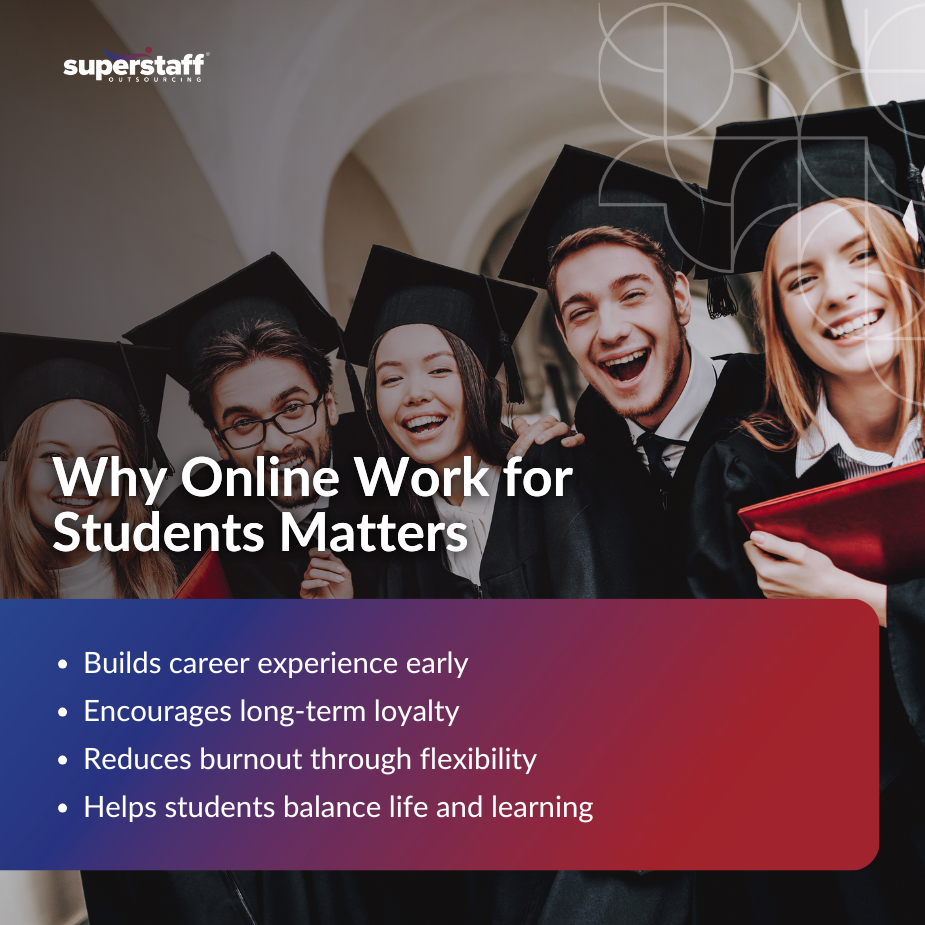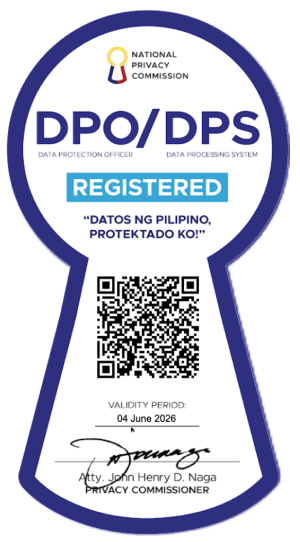
Behind every headset or login, some team members are juggling more than just work—they’re also chasing a degree. In today’s workforce, student employees are stepping up in growing numbers, balancing online work for students with demanding academic schedules. And with that balancing act comes both potential and pressure.
Student workers bring drive, tech fluency, and a hunger to learn. But without the right structure and support, even the most dedicated student can burn out. Companies that empower these employees through thoughtful workplace design stand to gain not only in performance—but in loyalty, retention, and future leadership.
This blog explores how businesses can build a flexible, growth-driven, and empathetic culture tailored for student success, especially in roles that support remote, virtual, or hybrid work models.

Flexible Scheduling Makes or Breaks Success
Flexibility isn’t a perk for student employees—it’s a requirement. Unlike full-time professionals, students have to juggle coursework, lectures, exams, and group projects, all of which can shift from week to week. When a job can’t bend to meet those needs, something gives—and often, it’s the job.
That’s why online work for students must start with flexible scheduling options. Whether it’s rotating shifts, adjustable part-time roles, or remote access, a work setup that respects a student’s academic life increases both productivity and morale. Students who can control their schedules are better able to show up focused, not frazzled.
What’s even more concerning is how this lack of alignment between work and education follows many students well after graduation. According to Forbes, more than half of college graduates, 52%, end up working in roles that don’t actually require a college degree. And even more alarming, 75% of those individuals remain in such roles for up to ten years post-graduation. These numbers reflect a broader disconnect between academic pathways and professional opportunities, often shaped early on by limited access to flexible, career-building jobs while still in school.
The most effective systems go one step further, offering transparent scheduling tools and easy shift swaps. These tools empower students to manage their time without fear of penalty when exams come around or school projects peak. When flexibility is built into the system, students gain room to succeed—and employers gain dependable, long-term contributors.
Still, flexibility alone won’t keep students engaged. What they really need is to feel like they matter.
Empathy Drives Retention and Confidence
A supportive work environment doesn’t just make room for student schedules—it makes room for student realities. Empathy is the difference between a team that supports its members and one that simply tolerates them.
Students are under a lot of pressure. Between tuition, family expectations, and academic deadlines, emotional fatigue can build quickly. That’s why it’s important for managers and team leads to maintain open lines of communication. Students should feel safe expressing when they’re overwhelmed or need support.
Simple adjustments rooted in empathy—like reducing workloads during midterms, offering flexible deadlines, or checking in regularly—can have a major impact. In fact, organizations that implemented similar changes to better accommodate employee needs saw significant gains: According to McKinsey, these types of empathetic interventions reduced monthly attrition rates by as much as 80%. That’s a powerful reminder that listening—and acting—makes people want to stay.
Companies that build empathy into their culture—by recognizing academic wins, encouraging honest feedback, and celebrating milestones—see greater engagement and lower turnover. Recognition doesn’t need to be formal; a shoutout after a big exam or a simple “good luck” can go a long way.
It all boils down to culture. When students know they’re seen as full people, not just part-time workers, they invest more fully in their work. That sense of belonging sets the foundation for development.
Training and Mentorship Fuel Long-Term Growth
Student workers may arrive with limited job experience, but they come with something more valuable: potential. To turn that potential into performance, companies must offer more than just instructions—they must provide mentorship.
Strong onboarding experiences designed with students in mind make a huge difference. These employees often need clarity on workplace etiquette, task ownership, and communication expectations. When onboarding is clear, paced appropriately, and reinforced with accessible resources, students adapt faster—and with more confidence.
But the learning shouldn’t stop there. Ongoing training programs and mentorship pairings help students envision a path beyond their current role. These relationships create room for feedback, encouragement, and informal coaching. More importantly, they provide role models who show students what success can look like.
When companies take time to invest in students as learners—not just labor—they help develop adaptable, loyal professionals who bring value well beyond graduation.
Policy Design Can Make or Break Student Retention
When workplace policies align with academic life, students don’t just survive—they thrive. Businesses that recognize the needs of working students and adjust accordingly tend to see better outcomes in terms of performance, satisfaction, and retention.
Think of it this way: if your policies don’t allow for a sick day during finals or create barriers to re-entering work after a school break, you’re losing valuable contributors. But if your policies include accommodations for academic events, predictable workloads, and options to transition between full- and part-time roles, you’re building loyalty.
Offering part time jobs for college students means more than hiring them—it means adapting your culture to support their realities. Some of the most effective approaches include lighter KPI expectations during peak academic months or optional project-based tasks to reduce stress.
The result? A culture where students feel confident committing long-term. Many will stay on after graduation, choosing full-time roles with companies that invested in them early. That retention pays dividends.
The Future Belongs to Student-Inclusive Workplaces
Workplace expectations have shifted. Today’s students are more informed, more vocal, and more intentional about where they work. They look for employers who align with their values, respect their goals, and support their development.
Online work for students isn’t a passing trend—it’s an evolving standard. Businesses that want to compete for emerging talent must evolve, too. They must build workplaces that are not just functional but supportive. They must create room for growth, not just tasks.
And perhaps most importantly, they must listen.
Student workers are the future of every industry. The skills they bring today—adaptability, digital fluency, and resilience—are the same skills tomorrow’s leaders will need. Companies that see beyond the student label and recognize the full potential behind it will position themselves to win in both talent and innovation.






